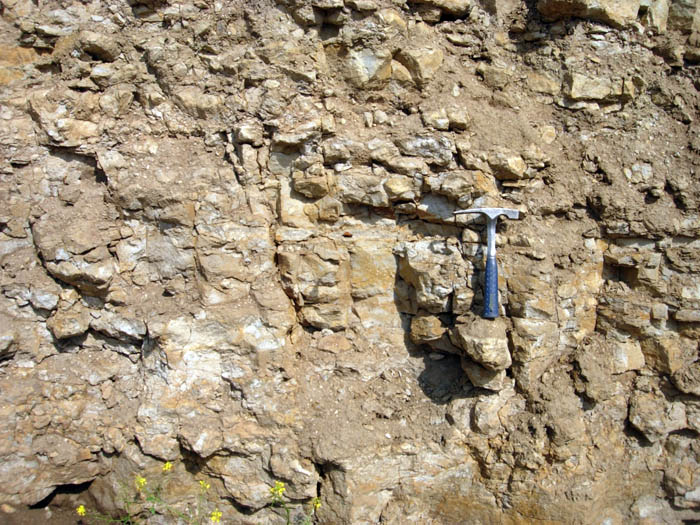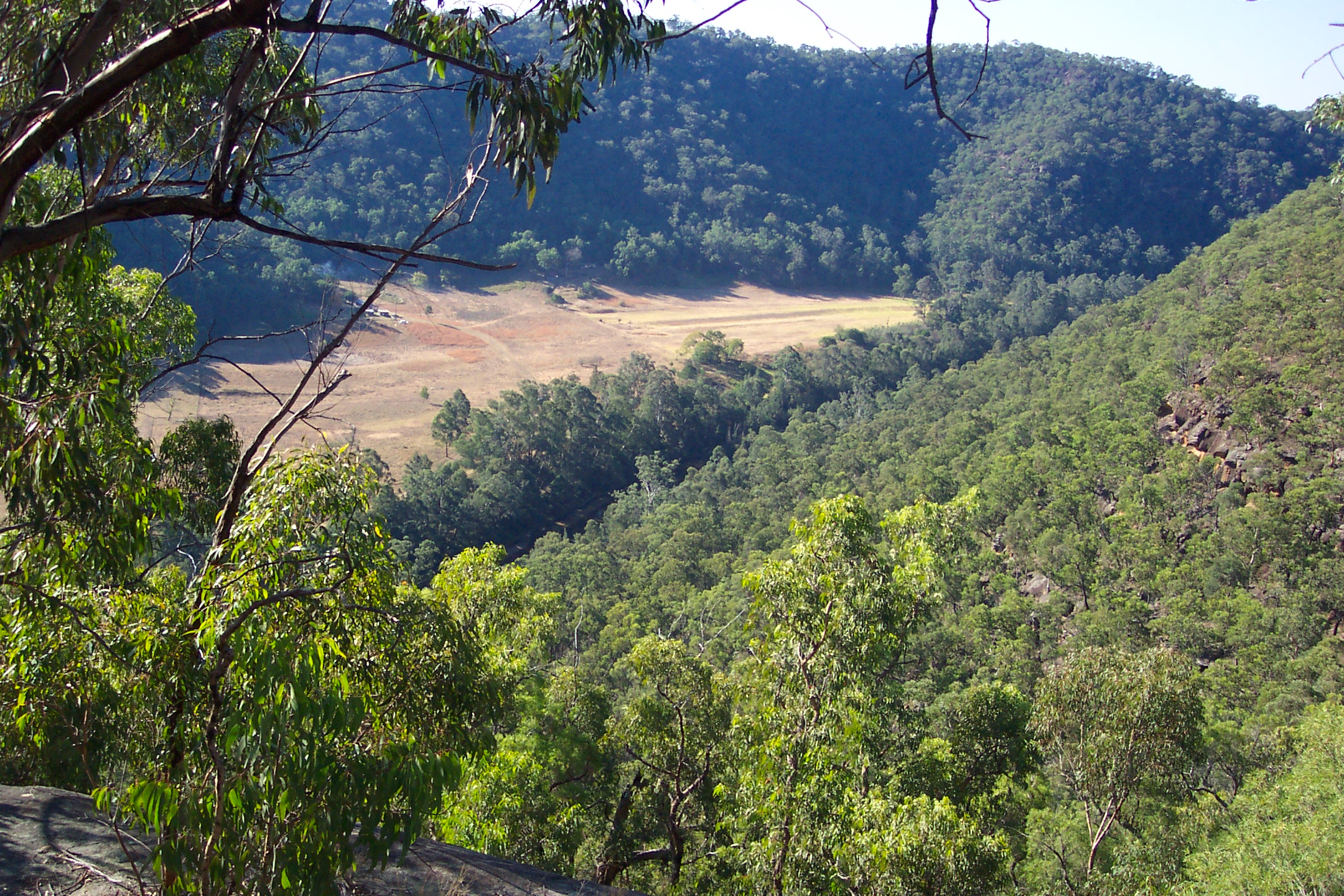|
Newnes Glow Worm Tunnel
The Glowworm Tunnel is a disused railway tunnel between Lithgow, New South Wales and Newnes, New South Wales, Australia. It is notable for its resident glow-worms, the bioluminescent larvae of ''Arachnocampa richardsae'', a type of fungus gnat. Description and history The tunnel was bored through the sandstone in 1907 as part of the Newnes railway line that served the Newnes oil shale mines that operated during the early 20th century. The railway was closed in 1932 and the rails were pulled out of the tunnel. The tunnel is now contained within the Wollemi National Park and is a popular attraction for bushwalkers and tourists. Outside the tunnel, the area features spectacular gorges, caves and scenery. The site is maintained by the National Parks and Wildlife Service. On the south side of the tunnel, a large gap in the road prevents vehicular access. According to some sources, this gap was created deliberately to keep cars out of the tunnel, because the exhaust fumes would ... [...More Info...] [...Related Items...] OR: [Wikipedia] [Google] [Baidu] |
Newnes Railway Line
The Newnes railway line (also called Wolgan Valley Railway) is a closed and dismantled railway line in New South Wales, Australia. The line ran for from the Main Western line to the township of Newnes. Along the way, it passed through a tunnel now known as the Glowworm Tunnel, because it is famous for its glow-worms. The tunnel is now contained within the Wollemi National Park. Description and history The line was constructed and operated by the Commonwealth Oil Corporation for their Newnes Oil Shale mine. Surveying and construction was overseen by Henry Deane. The line opened in 1907 and closed in 1932. It was primarily intended to carry goods to and from the mine, but also provided passenger services. The New South Wales Division of Australian Railway Historical Society published The Shale Railways of New South Wales in 1974 which includes a detailed history of this line. Allan Watson, the Lessee of the old Newnes Hotel, has a comprehensive websithere The steep 1 ... [...More Info...] [...Related Items...] OR: [Wikipedia] [Google] [Baidu] |
Lithgow, New South Wales
Lithgow is a town in the Central Tablelands of New South Wales, Australia and is the administrative center of the City of Lithgow local government area. It is located in a mountain valley named Lithgow's Valley by John Oxley in honour of William Lithgow, the first Auditor-General of New South Wales. Lithgow is on the Great Western Highway, about west of Sydney, or via the old mountain route, Bells Line of Road, from Windsor. At June 2021 Lithgow had an estimated urban population of 21,556. Estimated resident population, 30 June 2018. Lithgow is surrounded by a varied landscape characterised by seven valleys which include national parks, one of which, the Blue Mountains National Park, is a World Heritage Area. The Wollemi National Park is home to the Jurassic-age tree the Wollemi Pine, which was found growing in a remote canyon in the park. Location The city sits on the western edge of the sandstone country of the Blue Mountains and is usually considered the first true ... [...More Info...] [...Related Items...] OR: [Wikipedia] [Google] [Baidu] |
Newnes, New South Wales
Newnes (), an abandoned oil shale mining site of the Wolgan Valley, is located in the Central Tablelands region of New South Wales, Australia. The site that was operational in the early 20th century is now partly surrounded by Wollemi National Park. The settlement was originally built by the Commonwealth Oil Corporation. History and description A major oil shale mine with two headings was started on the north side of the Wolgan River, opposite the works. It was intended to tunnel through the mountain to meet up with some earlier workings in the Capertee Valley as mining conditions in the Capertee were regarded as being much better than in the Wolgan. However, mining difficulties and the generally low quality of the shale in this area meant that mining became concentrated on the No. 2 mine and work on the No. 1 mine was eventually abandoned. Although construction of a tunnel linking the Wolgan Valley with the Capertee was proposed on numerous subsequent occasions, it was to ... [...More Info...] [...Related Items...] OR: [Wikipedia] [Google] [Baidu] |
Arachnocampa Richardsae
''Arachnocampa'' is a genus of nine fungus gnat species which have a bioluminescent larval stage, akin to the larval stage of glowworm beetles. The species of ''Arachnocampa'' are endemic to Australia and New Zealand, dwelling in caves and grottos, or sheltered places in forests. A previous synonym was "''Bolitiphila''," meaning "mushroom lover," in the past. The name was changed in 1924 to ''Arachnocampa'', meaning "spider web-worm," for the way the larvae hang sticky silk threads to ensnare prey. The genus ''Arachnocampa'' belongs in the family Keroplatidae. Common features ''Arachnocampa'' species have holometabolous metamorphosis with eggs, larvae, pupae, and adults. Individuals spend most of their lives as larvae. These flies live from about 6 through 12 months as larvae, depending on food availability. A larva is only about 3–5 mm long when it emerges from its egg, and can grow up to about 3 cm long. The larva spins a nest out of silk on the ceiling of ... [...More Info...] [...Related Items...] OR: [Wikipedia] [Google] [Baidu] |
Fungus Gnat
Fungus gnats are small, dark, short-lived gnats, of the families Sciaridae, Diadocidiidae, Ditomyiidae, Keroplatidae, Bolitophilidae, and Mycetophilidae (order Diptera); they comprise six of the seven families placed in the superfamily Sciaroidea. Description The larvae of most species feed on fungi growing on soil, helping in the decomposition of organic matter. However some species are predatory, including those in the genus ''Arachnocampa'' of family Keroplatidae – the "glowworms" of Australia and New Zealand. The adults are long, and are occasionally pollinators of plants and carriers of mushroom spores. They also may carry diseases such as pythium (which causes "damping-off" to kill seedlings) on their feet. Most fungus gnats are weak fliers, and can often be seen walking rapidly over plants and soil, rather than flying. However when airborne, the gnats may be quite annoying to humans by flying into their faces, eyes, and noses, both indoors and outdoors. These flies ... [...More Info...] [...Related Items...] OR: [Wikipedia] [Google] [Baidu] |
Sandstone
Sandstone is a clastic sedimentary rock composed mainly of sand-sized (0.0625 to 2 mm) silicate grains. Sandstones comprise about 20–25% of all sedimentary rocks. Most sandstone is composed of quartz or feldspar (both silicates) because they are the most resistant minerals to weathering processes at the Earth's surface. Like uncemented sand, sandstone may be any color due to impurities within the minerals, but the most common colors are tan, brown, yellow, red, grey, pink, white, and black. Since sandstone beds often form highly visible cliffs and other topographic features, certain colors of sandstone have been strongly identified with certain regions. Rock formations that are primarily composed of sandstone usually allow the percolation of water and other fluids and are porous enough to store large quantities, making them valuable aquifers and petroleum reservoirs. Quartz-bearing sandstone can be changed into quartzite through metamorphism, usually related to ... [...More Info...] [...Related Items...] OR: [Wikipedia] [Google] [Baidu] |
Newnes
Newnes (), an abandoned oil shale mining site of the Wolgan Valley, is located in the Central Tablelands region of New South Wales, Australia. The site that was operational in the early 20th century is now partly surrounded by Wollemi National Park. The settlement was originally built by the Commonwealth Oil Corporation. History and description A major oil shale mine with two headings was started on the north side of the Wolgan River, opposite the works. It was intended to tunnel through the mountain to meet up with some earlier workings in the Capertee Valley as mining conditions in the Capertee were regarded as being much better than in the Wolgan. However, mining difficulties and the generally low quality of the shale in this area meant that mining became concentrated on the No. 2 mine and work on the No. 1 mine was eventually abandoned. Although construction of a tunnel linking the Wolgan Valley with the Capertee was proposed on numerous subsequent occasions, it was to ... [...More Info...] [...Related Items...] OR: [Wikipedia] [Google] [Baidu] |
Oil Shale
Oil shale is an organic-rich fine-grained sedimentary rock containing kerogen (a solid mixture of organic chemical compounds) from which liquid hydrocarbons can be produced. In addition to kerogen, general composition of oil shales constitutes inorganic substance and bitumens. Based on their deposition environment, oil shales are classified as marine, lacustrine and terrestrial oil shales. Oil shales differ from oil-''bearing'' shales, shale deposits that contain petroleum (tight oil) that is sometimes produced from drilled wells. Examples of oil-''bearing'' shales are the Bakken Formation, Pierre Shale, Niobrara Formation, and Eagle Ford Formation. Accordingly, shale oil produced from oil shale should not be confused with tight oil, which is also frequently called shale oil. Deposits of oil shale occur around the world, including major deposits in the United States. A 2016 estimate of global deposits set the total world resources of oil shale equivalent of of oil in place. ... [...More Info...] [...Related Items...] OR: [Wikipedia] [Google] [Baidu] |
Wollemi National Park
The Wollemi National Park () is a protected national park and wilderness area that is located in the northern Blue Mountains and Lower Hunter regions of New South Wales, in eastern Australia. The park, the second largest national park in New South Wales, contains the Wollemi Wildernessthe largest such wilderness area in Australiaand is situated approximately northwest of Sydney. The Wollemi National Park is one of the eight protected areas that, in 2000, was inscribed to form part of the UNESCO World Heritagelisted Greater Blue Mountains Area. The Wollemi National Park is the most northwesterly of the eight protected areas within the World Heritage Site. The national park forms part of the Great Dividing Range. The only known living wild specimens of the Wollemi Pine (''Wollemia nobilis'') were discovered in 1994. Special efforts were made to protect the trees when the 2019-20 Australian bushfires burned through the park. The national park is bounded to the north by the Go ... [...More Info...] [...Related Items...] OR: [Wikipedia] [Google] [Baidu] |
National Parks And Wildlife Service (New South Wales)
The National Parks and Wildlife Service (NPWS) is a directorate of the New South Wales Department of Planning and Environment responsible for managing most of the protected areas in the state of New South Wales, Australia. Despite its name the NPWS is a state agency rather than a national one, with similarly named counterparts fulfilling comparable functions in other states and territories. History The NPWS was established in 1967 when the Fauna Protection Panel and the Parks and Reserves Branch of the NSW Lands Department were amalgamated under Lands Minister Tom Lewis . Lewis also established a charity, the National Parks Foundation, to assist the NPWS in raising funds for conservation. The first Director of the NPWS was Sam P. Weems, formerly of the US National Park Service. Seven years after the founding of the NPWS, various state laws regulating flora and fauna were consolidated together into the ''National Parks and Wildlife Act 1974'', which remains the enabling legi ... [...More Info...] [...Related Items...] OR: [Wikipedia] [Google] [Baidu] |

.jpg)
Saunders_Quarry-1.jpg)

